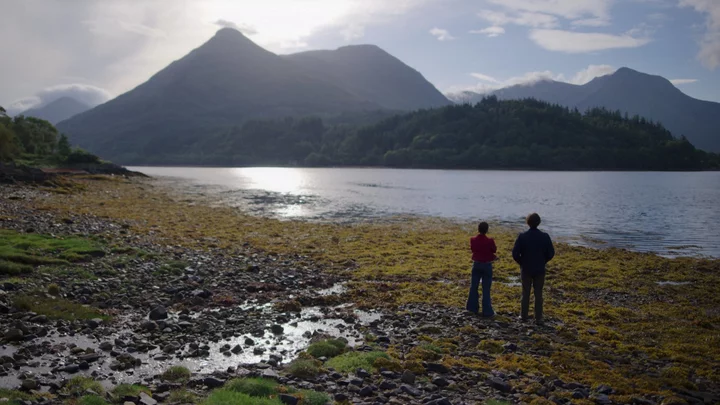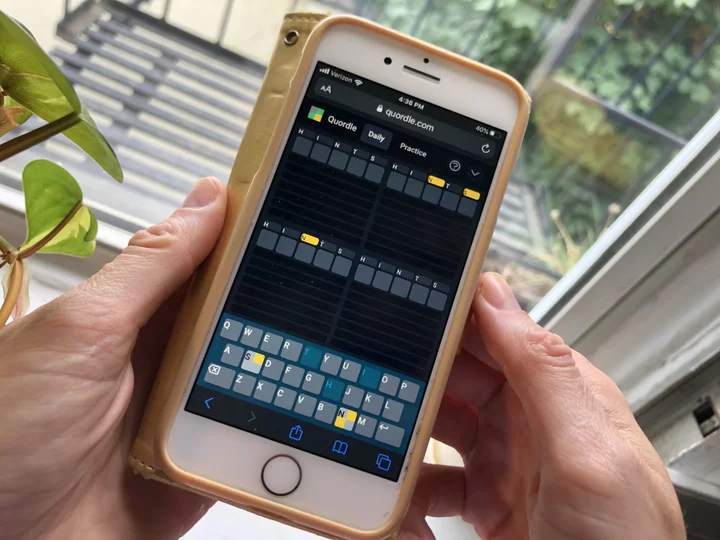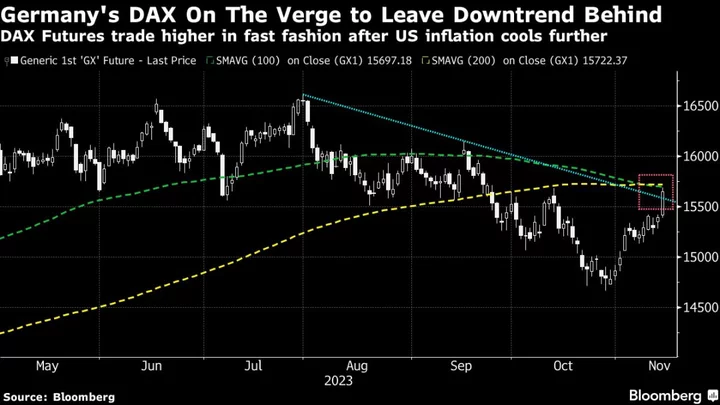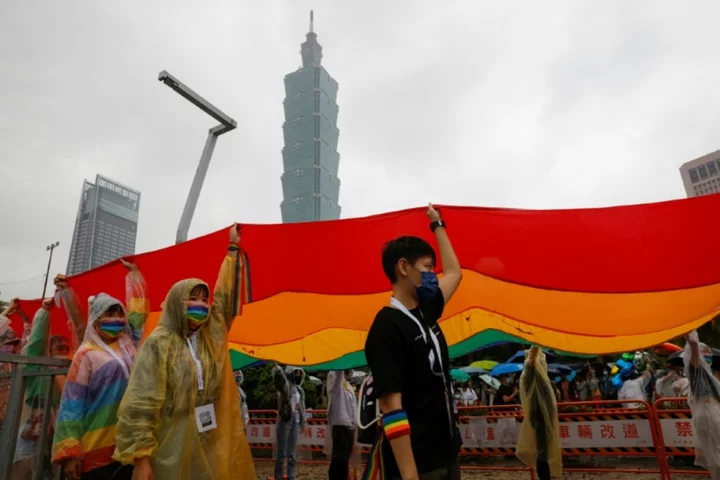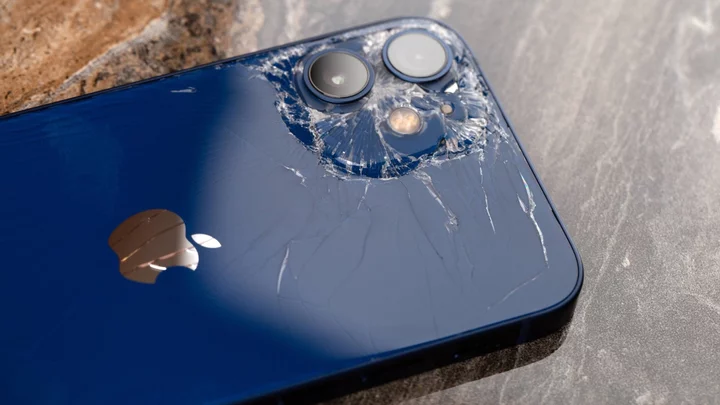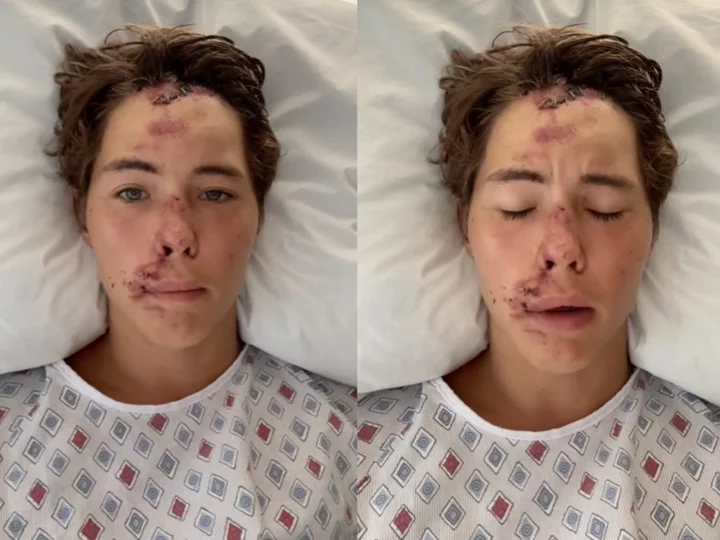"Cunts get a load of this place on their 4K fucking flatscreens and they will be crawling all over us like flies on dog shite, but with money."
Black Mirror Season 6 episode "Loch Henry" brings true crime way too close to home for protagonist Davis McCardle (Samuel Blenkin). But unlike this now messed-up documentary maker, the fictional location of Loch Henry itself gets a major boost from being featured in his film, as so eloquently put above by Davis' old friend Stuart King (Daniel Portman).
Sadly, we only get to see a glimpse of this boost. A little more could have helped Black Mirror make a stronger point, not just about the ethics of true crime, but about the long-precedented, often problematic power of true crime tourism. What doesn't quite add up in the episode is that the tourism boost only happens after Davis' documentary comes out on Streamberry (the show's streaming service parody of Netflix), with the horrendous added detail of his parents' involvement.
SEE ALSO: 'Black Mirror' Season 6: 'Loch Henry,' explained.Let's take a look at Black Mirror's "Loch Henry" amid the murky waters of true crime tourism.
Loch Henry's tourism took a dive after the murders.
When Davis brings his filmmaking partner and girlfriend Pia (Myha'la Herrold) back to his Scottish hometown of Loch Henry, they visit the town's only (and very empty) pub. Davis and Pia listen to his school friend Stuart describing how devoid of life this "ghost town" is, with "all the holiday atmosphere of a hospice."
"I don't get it. It's so beautiful around here. How are you not overrun with tourists?" Pia genuinely asks.
"There used to be three pubs around here. And now we're the last man standing. It's a proper dead zone," Stuart says.
"A proper dead zone." Credit: NetflixStuart explains that Loch Henry's tourist trade has been directly impacted by grisly murders that happened in the '90s. Detailing the town's macabre history, he directly blames the lack of visitors on "The Loch Henry Killer," Iain Adair, a local man who tortured and killed eight people in his family farmhouse's cellar, including honeymooning couple Dawn and Simon Challis in 1997 — "back when we still had tourists," Stuart remarks — then buried them in his fields.
"As you can imagine, it doesn't look great on TripAdvisor," Stuart says. "End result? Fuck-all visitors."
Wait, what? It's here "Loch Henry" doesn't really add up. The disappearance of the Challises and the investigation into Adair's gruesome dungeon was front page news; Stuart has his mother's whole archive of "Loch Death Monster" media coverage to prove it. But despite the initial media frenzy around the case, the town's visitors diminished after the news moved on — Black Mirror actually blames the death of Princess Diana for stealing Loch Henry's headlines in the late '90s.
This was all before the making of Davis and Pia's Streamberry documentary, Loch Henry: Truth Will Out, but the town is still a stunning Scottish loch with a dark, murderous history (Black Mirror filmed around Scotland, including around the beautiful Loch Lomond and Loch Long including towns Inveraray and Arrochar, in Argyll and Bute). This is classic true crime pilgrimage territory, which is absolutely how people would talk about it on TripAdvisor.
Tourism is the real reason Davis decides to make the film.
Beyond uncovering the terrible truth, the real motivation behind Davis' decision to make the documentary with Pia about Loch Henry isn't journalism, it's tourism.
After hearing the grisly story in the pub, Pia's interest mirrors that of true crime tourists, instantly wanting to get inside that dungeon: "Can we go see where it happened?" On arriving at the farm, she decides that this should be the basis of their documentary, insisting they would "do it justice". Davis struggles with the ethics of making a true crime documentary about a serial murder investigation connected to his father (in ways he can't yet imagine).
"Quaint little village, but for years, this Hannibal Lecter dude has been operating a death den at the heart of it? It's a story," she says.
"I love it." Credit: NetflixStuart, on the other hand, thinks it a brilliant idea to "bring the tourists back," even suggesting the drone footage that later opens the whole thing in the favoured style of true crime documentaries streaming right now. Here, the dialogue calls out Netflix by name, with its known obsession with true crime, and the impact docuseries can have on the locations where they're filmed.
"What was the name of that Netflix thing, about the guy that killed women?" asks Stuart.
"Maybe narrow that down," Pia responds, before they settle on a fictional show called The Waltonville Claw.
"So, half this show was just amazing, constant footage of Waltonville: forests and mountains, fucking waterfalls! Looked like a brochure," says Stuart. "My cousin actually booked a holiday just off how it looked; he said the place was fucking heaving when he got there."
Yep, they get those drone shots. Credit: NetflixStuart isn't wrong; that's exactly what happens in Black Mirror.
How does "Loch Henry" show true crime tourism?
The episode doesn't omit true crime tourism by any means, I just wish it pushed things even further.
During the BAFTAs ceremony at the end of the episode, Stuart watches from a now-packed pub thanks to the success of Davis' successful documentary Loch Henry: Truth Will Out. "We've been booked up for weeks, pal," Stuart tells Davis on the phone. "Listen to how packed it is."
Behind Stuart, you'll probably be horrified to spot tourists downing pints wearing red masquerade masks identical to the one worn by Davis' mum Janet (Monica Dolan) when torturing people, as seen in the footage she leaves for Davis. It's a small, effective nod to the problematic glorification of murderers; a pretty insensitive, frivolous rendering of a real killer as a sparkly costume.
It makes sense Loch Henry's most populated spot (that we see in the Black Mirror episode) is the local pub, which plays a major role in the story: Victims Dawn and Simon Challis were seen drinking at the pub, and Iain Adair "drank in here all the time, always sat right there." True crime tourists often visit bars that murderers have visited, from London's Ten Bells pub, associated with Jack the Ripper, to biker bar The Last Resort, where Aileen Wuornos was arrested, and Chicago's L&L Tavern, where serial killer Jeffrey Dahmer was arrested and John Wayne Gacy reportedly visited.
In fact, the end scene in the pub is the only indication we get that Loch Henry has become a true crime tourist mecca. Black Mirror could have made deeper, darker point here about the ethics of travelling to a place where real people have suffered real violence and death, just because it was featured in a popular documentary.
Everyone watched. Now everyone visits. Credit: NetflixJust one montage could have shown tourists buying insensitive merchandise, eagerly wandering through the town up to the farm and over to the cottages. "Can we go see where it happened?" visitors could eagerly ask, echoing Pia's own excitement. Because this is quite literally what happens in real life.
Netflix didn't start true crime tourism
True crime, of course, isn't a newfangled thing, it's just finding new platforms like streaming — and intense popularity, at that.
"The genre isn’t exploding because it’s new," Alison Foreman writes for Mashable. "Historians trace the commodification of our cultural crime fetish to as early as the mid-16th century, when the practice of pamphleteering collided with increased literacy rates throughout Europe. Though readership was still limited to aristocrats with enough money and time for such diversions, gruesome stories of murder and assault rapidly came into violent vogue.
"In the century that followed, crime pamphlets and magazines rolled in salacious tales of cruelty and gore, touting the tormented confessions of high-profile prisoners, details of the supposed spectral evidence at witch trials, and more. How the genre got its name isn’t known precisely, but by the time Random House published Truman Capote’s nonfiction In Cold Blood in 1966, 'true crime' was a widely accepted literary term."
True crime tourism, a specific type of dark tourism (when tourists visit sites specifically where human tragedy has occurred), has long accompanied such literary coverage. Today, online platforms simply make it easier for people to start their own tours or find their niche interest catered for. Sites like Trip Advisor, Airbnb, and Viator are brimming with true crime tours, allowing tourists to take a walk through cities from New Orleans to Los Angeles, Sydney to Seoul, Paris to Lisbon. Even the ancient Roman temple complex where Julius Caesar was stabbed just opened to tourists.
From the streaming and podcast era, bloggers plot out locations from more modern true crime documentaries for self-guided tours: Baltimore for Serial listeners, Manitowoc and Waupun, Wisconsin, for Making a Murderer viewers.
The intrigue is as it always has been. As Pia says in Black Mirror, "The mystery is, 'How could someone do that shit?' It's 'What the fuck?' It's 'Give me the details.' And the details are so awful, it is irresistible."
"The details are so awful, it is irresistible." - Pia, 'Black Mirror'True crime tourism usually focuses on specific criminals; if I had a penny for the amount of Jack the Ripper tours that run through London nightly... Serial killer tours raise considerable ethical questions around misguided reverence and glorification of violence and murder, and respect for the victims and their families. People pay for tours around Milwaukee's warehouse district, where serial killer Jeffrey Dahmer abducted, tortured, and murdered young men and boys in the '90s — there's one tour featured on the Netflix show Dark Tourist. Chicago has more than its fair share of crime tours, including visits to the site of the "Murder Castle" of serial killer H.H. Holmes. Tour guides have long run Ted Bundy itineraries in Seattle, and L.A. has multiple tours built around the 1947 Black Dahlia murder and the 1969 Manson Family murders.
SEE ALSO: Netflix's 'Dahmer' backlash highlights ethical issues in the platform's obsession with true crimeLizzie Borden's house in Fall River, Massachusetts, is now a museum and runs guided hours daily — you can even stay the night in the house. Haunted hotels that you can actually stay the night in have been popular for so long, they're basically standard accommodation options now.
In Black Mirror, after the group's visit to the crime scene, the farm's dungeon, Stuart makes the observation, "That might be a tourist draw in itself, actually." Davis makes a joke about tempting people to stay the night there. Despite how inappropriate this is, it's likely this would happen in Loch Henry, considering travel's long tradition of macabre accommodation. Did the town make that happen? Did the cottage where the Challises stayed receive the same treatment? We don't see.
SEE ALSO: The most haunted road trip in America"Loch Henry" scratches the surface of true crime ethics
The most important thing true crime tourists need to keep in mind: At every location, these were real people, with real families.
"True crimers are insatiable, drinking up stories of humanity’s lowest lows every hour of every day," Alison Foreman writes for Mashable. "And yet, true crime is not just entertainment. These are real stories of real people in really terrible moments — and that comes with real consequences."
Though he'll later relent with the promise of boosted tourism, Davis hits the nail on the head in Black Mirror, being shocked at Pia for wanting to make the film at all considering that (he thinks) his father was killed by the murderer. "That's real. That's not fucking content." But content is exactly what it will become, thanks to Netflix Streamberry, and it will royally mess Davis up.
"The episode tackles how true crime shows reopen wounds for the victims of those crimes and their families, blurring ethical boundaries for the sake of sensational storytelling," Mashable's Yasmeen Hamadeh writes. "'Loch Henry' illustrates the lived reality victims experience when they watch their trauma remade through scratchy VHS recordings and moody piano soundtracks to create a spectacle that finds its appeal through its nastiness. Who cares if your parents were serial killers and your girlfriend's dead, Davis? Your story makes for great content, and that's all that matters to 'Streamberry.'"
"That's real. That's not fucking content." Credit: Netflix"Brooker's script for this one scratches at the callousness of the true crime genre, where lip service is paid to the personal stories of the victims even if unearthing these heartaches can unleash new pain. It also makes macabre jokes about how those gorgeous aerial shots from drones can make any notorious town seem a tourist-friendly destination," writes Kristy Puchko in her review of Black Mirror Season 6. "On the other hand, the episode aims to satisfy the very blood lust its story seems to critique."
While taking shots at Netflix and the might of true crime, Black Mirror does pay a small homage to the power of true crime tourism. But it feels like a missed opportunity to really show the impact a documentary could have on dark tourists. Perhaps people's morally ambiguous everyday obsession over true crime and "where it happened" can be seen in Stuart's mum's archive of newspaper clippings and news broadcast footage.
"It's not every day one of your regulars turns out to be Vlad the Fucking Impaler, is it?" Stuart says.
"She was bound to want a souvenir."
How to watch: Black Mirror Season 6 is now on Netflix.

